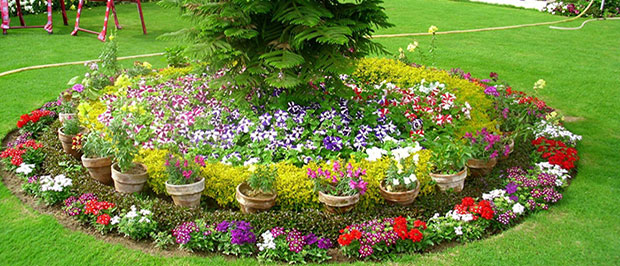Transforming Your Garden: Flower Bed Design and Installation in Tulsa
Creating a vibrant and visually appealing
garden begins with thoughtful flower bed design and expert installation. For
homeowners in Tulsa, Oklahoma, the unique climate and soil conditions present
both challenges and opportunities. This blog will guide you through the key
factors to consider for successful flower bed design and installation in Tulsa,
ensuring your garden becomes a thriving oasis.
Here are the key factors of flower bed design and Installation in Tulsa:

Climate Considerations
Tulsa experiences a humid climate, which is characterized
by hot summers and mild winters. This climate necessitates selecting plants
that can thrive in high temperatures and occasional drought conditions.
Moreover, Tulsa's weather can be unpredictable, with sudden storms and
temperature fluctuations, making it crucial to choose resilient and adaptable
plants.
Soil Analysis
Tulsa’s soil varies from sandy loam to clay,
often requiring amendments to support optimal plant growth. Conducting a soil
test is the first step in determining the soil type and nutrient levels. Based
on the results, you can amend the soil with organic matter, compost, or sand to
improve drainage and fertility.
Designing Your Flower Bed
Choosing the Right
Plants
Selecting plants suited to Tulsa’s climate and
soil is vital. Native plants, such as Black-eyed Susans, Coneflowers, and
Oklahoma Roses, are excellent choices as they are adapted to local conditions
and require less maintenance. Additionally, incorporating a mix of perennials
and annuals can provide year-round color and interest.
Layout and Spacing
The flower
bed design and Installation in Tulsa should consider the mature size of plants to avoid overcrowding.
Plan for adequate spacing to ensure good air circulation and light penetration,
reducing the risk of disease. You can make maintenance easier and more
efficient by grouping plants with similar water and sunlight needs together.
Color Schemes and
Themes
Decide on a color scheme or theme that
complements your home and landscape. Whether you prefer a monochromatic look
with varying shades of one color or a vibrant mix of contrasting hues, planning
your color scheme will create a cohesive and visually appealing flower bed.
Installing Your Flower Bed
Preparing the Site
Start by clearing the designated area of any
grass, weeds, or debris. Use a garden tiller or spade to loosen the soil to a
depth of about 12 inches, ensuring good root penetration.
Planting Techniques
When planting, dig holes twice as wide and just
as deep as the plant's root ball. Gently place the plant in the hole, fill it
with soil, and press down lightly to remove air pockets. Plants must be watered
thoroughly after planting to help them establish.
Mulching and Watering
Applying a layer of mulch around your plants
helps retain moisture, regulate soil temperature, and suppress weeds. Organic
mulches such as wood chips or straws are excellent choices. Watering is
crucial, especially in the first few weeks after your flower
bed design and Installation in Tulsa.

Comments
Post a Comment